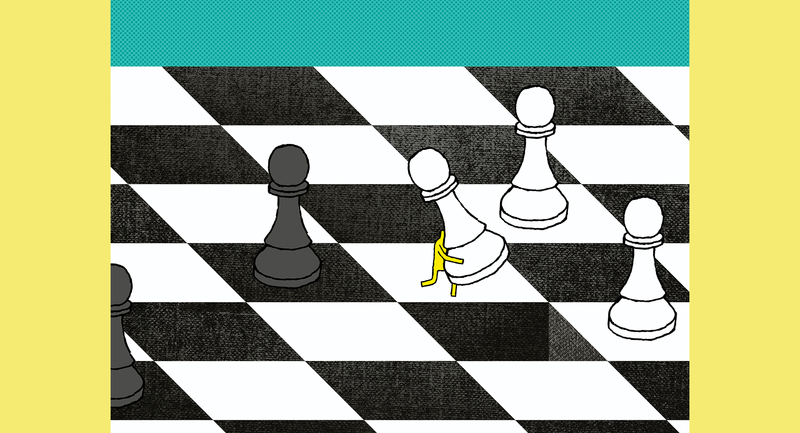What should teachers do when a young reader is stuck on a word? Should they tell the child what the word is? Or prompt her to look at the picture? To guess based on context? Sound it out? What should they do if a child reads the word but doesn't know what it means, or what the larger text means?
These are fundamental questions early-grade teachers face every day. Yet they are riddled with controversy and mixed messages. It's important that education leaders have research-informed answers to these questions and can support teachers' learning about them. As someone who's spent decades conducting and reviewing research about reading, I'd like to offer guidance on these questions, based on current research.
To begin, let's distinguish among five questions young readers in your school or district are likely to face regularly and the core processes that are involved in them. I've broken them down in Figure 1.
In my view, much of the confusion about what to tell a child who's stuck on a word is the result of the field being unclear about the distinctions among these five questions and processes. I will leave the rather complex question "Why does that meaning matter?" for another article, but let's consider each of the others in turn.
What Is That Word?
To identify words, good readers primarily use the letters in words. Good readers pay attention not just to the individual letters, but to where they are positioned in the word and which letters are around them (Grainger, 2018). For example, you recognize that when "y" appears at the beginning of a word, it's likely to represent the sound heard at the beginning of the word yes, but when it appears at the end of the word, it's likely to represent the sound i or e as in fly or happy. You process "h" differently if there is a "t" right before it. The letters and the spaces and letters around them (orthographic context) drive word identification.
To some degree, readers also use the broader context to identify words. For example, read the following sentences aloud:
She took an arrow from her quiver and drew back the bow. The king ordered all his subjects to bow down before him.
The way you pronounced bow in the first sentence very likely rhymes with know, whereas the way you pronounced it in the second sentence likely rhymes with now. Nash-Webber (1975) shares this different kind of example:
The underlined words are actually identical, but you probably read the first as event and the second as went. When you are identifying words, you're also thinking about the meaning of the words leading up to them.
Examples like these have led some to think that we should teach and prompt beginning readers to use meaning (often framed as what sounds right and makes sense) to identify words from the start. But that's not the case for several reasons.
First, most of the time, context does not lead to successful word identification. When some words in a passage were covered up, even graduate students were able to correctly guess the word only 36 percent of the time. Seeing even some of the letters in the words, however, really helped these students guess a word (72 percent correct) (Kucer, 2011). Children with little vocabulary or content knowledge related to a text may have considerably more difficulty.
Also, in the early stages of reading development, children already use information other than letters to identify words (Ehri, 2014). It doesn't make a lot of sense to prompt children to do what they are already developmentally inclined to do instead of prompting them to do what we want them to learn to do—attend closely to the letters in words and their associated sounds.
More important, if readers identify words through context, they don't go through the process of forming connections between letters and sounds, which is needed to store words in memory so that they can eventually be read automatically. Indeed, there is evidence that words identified through context aren't learned as well as those identified through analysis of the letters in words (Landi et al., 2006).
Finally, prompting children to identify words through context is a missed opportunity to reinforce the letter-sound instruction children are experiencing, which should, like the letter-sound associations in the texts children are reading, be increasing in complexity over time. (The Listening to Reading Protocol referenced at the end of this article describes a typical pattern of increasing complexity.)
To be clear, educators shouldn't discourage children from using context to identify words. If children are monitoring comprehension, they will have meaning in mind. However, we shouldn't prompt children to use context to identify words. We should prompt them to attend closely to the letters and sounds of words to maximize the chances that they will eventually become automatic in reading those words.
Did I Read That Word Right?
At the same time, we do want children to pay attention to whether the words they have just decoded or identified actually sound right and make sense. This is part of comprehension monitoring. Imagine the text says, "It was hot. I began to sweat." A child might, understandably, read sweat as sweet, as ea often represents the long e sound. We need the child to notice that sweet doesn't sound right or make sense, and to go back to reread. Doing so gives the child another chance to correctly identify the word and connect the word's spelling to the correct pronunciation in memory.
Even beginning readers are capable of monitoring their comprehension, but children differ in the extent that they adopt this as a habit during their reading. It's important to teach and prompt children to monitor their comprehension and to employ fix-up strategies if what they have read doesn't sound right or make sense. One goal is to get children to the point where they correct themselves, without prompting, when they have misread a word (self-correcting).
What Does That Word Mean?
How does a child know whether what they've just read sounds right or makes sense? This depends in part on the individual words in their oral vocabulary. Consider the word hove. Is the "o" pronounced like love or cove or move? Unless hove is part of your oral vocabulary, you don't know. Vocabulary knowledge intersects with our ability to monitor comprehension and with word-reading development. Fortunately, from early on, children can use strategies to help figure out the meaning of unfamiliar words. Here, context is important. Contextual sources include graphics (such as a diagram that shows an animal's mane) and words around the target word ("The huge ship hove into sight"). Other strategies include using resources (like a dictionary or asking someone), using morphology of the word itself (such as un + like), considering polysemy (thinking, "maybe this word means something different in this context"), and, for multilingual children, considering cognates (for instance, knowing that luna means moon in Spanish helps with figuring out the meaning of lunar).
You might think young readers shouldn't be reading texts that include words whose meanings are unfamiliar and must be figured out, but this is difficult to avoid. I can't tell you the number of times I've had to explain to children reading decodable texts what a pal or a hog is, for example. Children differ enormously in the size of their vocabularies. There's no way to avoid dealing with vocabulary as part of supporting young readers.
What Does the Text Mean?
Children need to know not only what individual words mean, but also what those words mean collectively. Myriad factors influence children's reading comprehension development (Cartwright & Duke, 2019), such as their knowledge related to the content of the text they're reading and how accurately they are reading the words. Indeed, there's a cycle in which accuracy of word reading affects comprehension and comprehension affects children's ability to monitor whether they've read words accurately.
There's another reason to attend to comprehension—it's the purpose of reading in the first place. There is widespread agreement among researchers who study reading instruction that teachers in the early grades should implement practices to strengthen students' comprehension as well as word-reading ability; comprehension shouldn't wait until later.
Powerful Prompts
With this background in mind, let's return to the question of what to do when a reader is stuck on a word, along with other questions about prompting. It's important to prioritize prompts that children can eventually internalize and use independently. Children need to read a lot to become proficient readers, and most children will not have the luxury of having an adult with them for all of that reading. Children's developing ability to help themselves when stuck on a word will lead to more successful and satisfying reading. The three tables presented in this article describe key prompts teachers can offer readers who are stuck, based on the reading issues I've identified.
Key Prompts for Comprehension
In addition to the prompts provided in Table 2 for comprehension monitoring, there are other ways we can prompt children for comprehension. Discussion of the meaning of a particular text is itself a way to prompt comprehension (Wilkinson & Bourdage, in press). Also advisable, for comprehension and motivation, is prompting children to process the meaning of the text in relation to their purpose for reading (what I call compreaction, combining comprehension and action). Here are two examples of such prompts: For knowledge building, "Remember to look for new information about [a current topic of study]." For how-to text, "Stop reading at the end of each step to make sure you understand what to do next."
Prompting can also be used to remind children of comprehension strategies they have been taught. For example, to reinforce predicting, we could say, "Are you thinking about what might happen next?" Although some have questioned the value of comprehension strategy instruction, particularly for young children, the research base in support of it is extremely strong, even with young children (Shanahan et al., 2010). Similarly, teaching children to attend to the structure of the text and prompting them to do this are well-supported by research and have been shown to have value beyond knowledge building (Williams et al., 2014).
A Challenge Worth Accepting
Early-grade teachers need a lot of knowledge and strategies to help children become readers. Research-based understanding of the many processes in children's minds as they read can help teachers provide appropriate prompting and avoid pitfalls—like prompting children to use context to identify words. Admittedly, applying the typology offered here and prompting effectively in real time is challenging. To help teachers become more facile with these processes—and learn more about their individual students as readers—I've developed, with Alessandra Ward and Rachel Klingelhofer, a Listening to Reading Protocol. We hope adding this protocol to their repertoire will strengthen teachers' effectiveness as we all move from confusion to clarity in helping children become skilled readers. Author's note: I thank the following scholars for their feedback on and support of this piece: Linnea Ehri, Barbara Foorman, Heidi Anne Mesmer, P. David Pearson, Timothy Rasinski, Timothy Shanahan, and Tanya Wright.
Check Your Texts!
The prompts shared here have implications for the texts young readers read. Texts need to reward attention to letters in words by being mostly decodable based on the letter-sound relationships the children know so far. But they also need to make sense so children can successfully monitor their comprehension—and they need to be worthy of comprehending, so that students want to figure out the meaning of unfamiliar words and the text as a whole. For more information about texts for young readers, visit textproject.org.
Reflect & Discuss
➛ What do you generally do when a reader you're helping gets stuck on a word?
➛ Do you often feel unsure of the best way to help a reader stuck on a word? What have you learned from this article that will help you respond more effectively?









